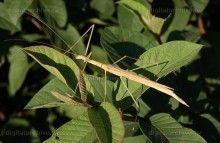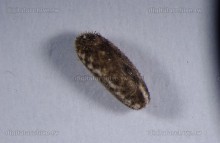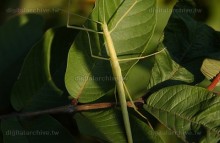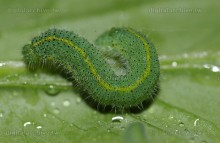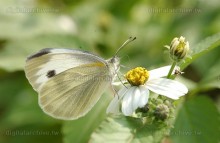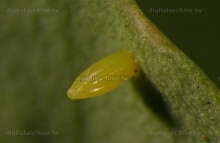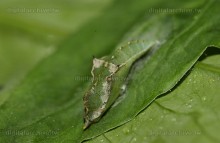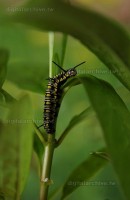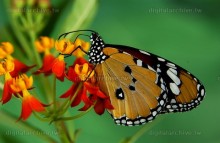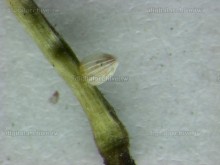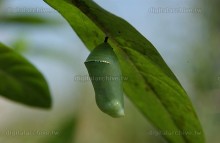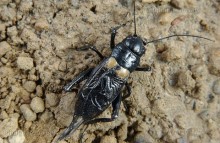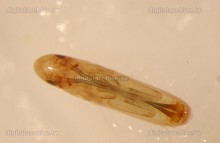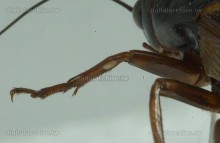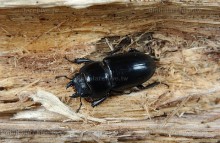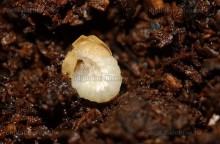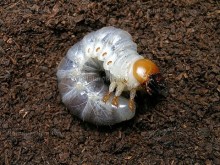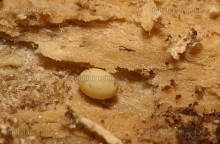TELDAP Collections
| The variation of insect's world |
|
Metamorphosis is an important process in insect's life cycle, because morphology and physiology of insect are quiet different in different stages. Butterflies and stag beetles are complete metamorphosis insects with pupa stage; as for crickets and walking sticks are incomplete metamorphosis insects whose larvas are similar to adults. We can learn the secrets of insects by understanding more about them. Insects form the most species-rich group of living organisms in the world. They are mainly divided into two parts, complete metamorphosis insects and incomplete metamorphosis ones. Insects that undergo complete metamorphosis like butterflies and stag beetles have pupa stages while the larva (called nymphs) of crickets and walking sticks resemble their adults in the process of incomplete metamorphosis. The abundance of species and the variety of different stages in the life cycle of insects have made them the most diverse group of living beings on earth. It is truly worth our devotion to further studying about them. 【Walking stick】 Some walking sticks are all female and reproduce by parthenogenesis. So far there were no males recorded in many species of walking sticks. Thus female walking sticks of these species produce offspring from unfertilized eggs without the process of copulation. Walking sticks are exquisitely good at camouflage. Usually they disguise themselves as the twigs of trees. When the wind blows, they swing just like twigs do. They swing from side to side, and the harder the wind blows, the more they swing. Another special skill walking sticks develop to protect themselves from predators is giving up their appendages to save lives. If a walking stick is caught by its predator on the leg, it would give the leg away to its enemy. Nymphs then regenerate new legs little by little every time they molt. But adults have lost the ability to regenerate their appendages. Upon facing dangers, some species would even secrete thick odor of ginseng from glands on the anterior protergum to scare the predators away. 【White butterfly】Pieris, the whites, is a widespread genus of butterflies. They are found everywhere in the world. In Taiwan, they are also the most commonly seen butterflies around the whole island. Many species have caterpillars which feed on leaves of the family Brassicaceae. Thus the crop-damaging species is often considered as pests by farmers. However, when the adults sip the nectar of flowers, they are perfect matchmakers for the plants. Without whites’ help, some plants can't even propagate. Whites produce a type of chemical called pheromone to attract their mates just like most of the insects do. They give off special smells, which travel to further distance through the air to attract the opposite sex. At close quarters, whites identify one another by sight instead of scent. The females and males of whites might look alike for humans. In the whites’ eyes which can see through UV light, the opposite sex is so different that they can easily distinguish one from the other at the first sight. 【Plain Tiger】Plain tigers spread widely all over the world. Larvas are fearless of their predators at all because the caterpillars feed on poisonous plants and accumulate the poison inside their body through their whole lives. The adults therefore fly slowly and leisurely near the ground. Besides, the caterpillars wear horrifying warning colors and have exaggerated spines to scare off the predators. Once the inexperienced predators attack the caterpillars, they would have diarrhea and feel very painful. Female and male plain tigers may look alike but are not impossible to be identified. When you squeeze the end of the abdomen of male plain tigers, the pheromone-producing brush-like organs would be pushed out. The coloration on their hindwings of male and female is quite different. Males have a number of secondary sexual characteristics on their wings. The biggest black spot, also at the lowest among the four on the hindwings is unique to a male plain tiger. In the ventral side of the hindwing of a male, there is a white plaque which is not seen on female. 【Cricket】 Crickets, nicknamed “Chiu-chiu-er” in Chinese live in soil or underground tunnels. Their chirping and fighting habits had made them extremely popular in China from the old times. They are often kept as caged pets. And honored as the champion bugs in the world by the Chinese people. Male crickets chirp while females don't. There are ridges or "teeth" that act like a "comb and file" instrument on the forewings of the male. The chirp is generated by raising their left forewing and rubbing it against the upper hind edge of the right forewing, which has a thick scraper. Male crickets make two different kinds of sound, one is to threaten the same sex and the the other to attract the female crickets. When two rival males meet, they raise their wings and make displaying sound first. Then they wrestle and bite each other with strong jaws. They often got broken legs after the fighting. Crickets chirp. But how do they hear? Do crickets have ears? The answer is yes. To hear the call, a cricket has hearing organs located on its front legs. And the hind legs are very strong that make them great leapers. It is very easy to tell a female cricket from a male. Female crickets don't chirp. So their wings are without ridges and look smoother. And because females are responsible for laying eggs, they have a long needlelike egg-laying organ, the ovipositor, since they are in the larval stage. 【Stag beetle】Stag beetles show phototaxis at nights. They are famous for their distinctive mandibles found on the males of most species. Male stag beetles use their jaws to defense themselves or to wrestle each other for favoured mating partners with the same species. Female stag beetles are more nervous and aggressive in nature. But they are normally harmless because their mandibles are smaller than the males. They often do fake death when they encounter potential enemies. Female stag beetles feed and lay eggs on tree bark or rotten wood. The larvae then feed on the rotten wood. Later after the adults crawl out of the wood, they turn to eat fruits and tree sap. The sizes of adult stag beetles differ according to their nutrition in larval stages. The better nutrients they were provided, the bigger they grow. Normally bigger male adults are fiercer but stable. When they bite, it is often a sign of warning. Smaller ones on the contrary are more nervous and easily irritated. They are more likely to bite people at random.
臺灣大學昆蟲標本館典藏數位化計畫 Digitalized Insect Museum-Bugs Recall http://www.imdap.entomol.ntu.edu.tw/
|






